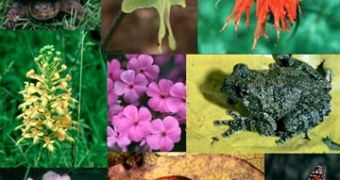We focus on finding life on Mars and other alien worlds, but we still don't know everything about our own planet. After over 250 years of taxonomy research, we don't even know exactly how many flora and fauna species roam the Earth, not to mention classifying them.
The National Science Foundation's "Tree of Life" project estimates the number from 5 million to 100 million species on the planet, but roughly 2 million have been catalogued by now.
"We've only touched the surface of understanding animal life. We've discovered just 10 % of all living things on this planet." said entomologist Brian Fisher of the California Academy of Sciences.
The exact count of Earth's creatures is essential for "the foundation for understanding life on this planet," Fisher said. This knowledge is particularly important as global warming, deforestation and other signs of human development are menacing many species, which could be crucial to the functioning of ecosystems or could lead to the development of medicines or other products.
"Knowing what kind and how much life is out there could make society more "bio-literate"-we would better understand the impacts that human activities have on other living things. We could have kind of a Dow Jones index of the environment," Fisher added.
The main reason of the precise lack of knowledge in the number of species is that most of the undiscovered bugs belong to the realm of the very small: insects, bacteria and other microorganisms.
"We've done a pretty good job of categorizing from the size of a fly up, but anything below that is far less known," said Joel Cracraft of the American Museum of Natural History in New York.
Another issue is that taxonomy has a long history in the developed countries, ignoring the high diversity of most of the southern hemisphere, which is less developed on average.
"Species aren't equally distributed across the Earth; they have these hotspots," Fisher declared.
"For example, there are about 2,000 known insect species in North America, but only 200 in Australia, while the sampling of Australia's plant diversity suggests that there could be as many as 3,000 insect species in Australia," said AMNH entomologist Randall Schuh,
The issue is also complicated by the "cryptic" species, which have identical morphology, but genetically are different, making them extremely difficult to classify. New techniques like DNA sequencing allow us to distinguish one species from another, particularly "cryptic species" and smaller beings.
"We're going to find more and more things through these tools, there's no doubt about it," said Schuh.
Projects like the "Tree of Life," a Planetary Biodiversity Inventory co-headed by Schuh and the Census for Marine Life (a network of researchers in over 70 nations involved in a 10-year initiative to determine the diversity and abundance of marine life), are aimed to assess, determine, catalogue and connect lineages of our planet's millions of species.
"I think now we can, if we put some resources behind it, address this exciting fact that 90 % of life is yet to be discovered on the planet," concluded Fisher.

 14 DAY TRIAL //
14 DAY TRIAL //